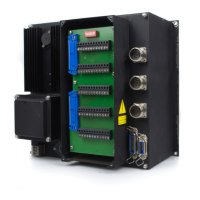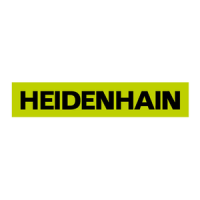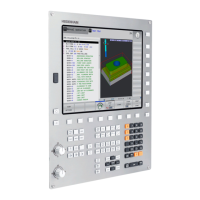Do you have a question about the HEIDENHAIN TNC 426 and is the answer not in the manual?
Description of the TNC's display unit, keyboard layout, and key functions.
Explanation of different operating modes like Manual Operation, MDI, Programming/Editing, and Test Run.
Procedure for safely powering on and off the TNC control and machine tool.
Methods for manually positioning machine axes using direction buttons or electronic handwheels.
Steps for setting datums manually when a 3-D touch probe is not used.
Using MDI for simple machining tasks, pre-positioning, and writing/executing short programs.
Procedures for calling, selecting, deleting, copying, and transferring files using standard management.
Steps for organizing NC programs, defining blank forms, and writing tool movements.
Accessing and understanding error messages for quick problem resolution.
Inputting feed rate and spindle speed for tools in TOOL CALL blocks.
Requirements for tool compensation, numbering, naming, length, and radius.
Explanation of tool length and tool radius compensation principles and application.
Programming tool movements using coordinates, main planes, and multiple axes.
Programming contours using Cartesian coordinates, including lines, chamfers, circles, and FK.
Using M functions for program control, spindle, coolant, and program interruption.
Methods for defining and calling cycles using soft keys or GOTO function.
Detailed explanation of various cycles for drilling, tapping, and thread milling operations.
Cycles for machining various shapes like pockets, studs, and slots.
Cycles for creating circular and linear patterns of holes.
Applying transformations like datum shift, mirror, rotation, scaling, and working plane tilting.
Operating sequence, programming notes, and calling subprograms for modular programming.
Introduction to Q parameters for variable programming and mathematical functions.
Using Q parameters to program families of parts with variable dimensions.
Procedures for checking and modifying Q parameter values during program execution.
Simulating programs to detect errors like geometrical incompatibilities or missing data.
Executing programs in Full Sequence or Single Block modes, including interruptions.
Configuration of RS-232, RS-422, and Ethernet interfaces for data transfer.
Procedure for replacing the TNC's buffer battery to prevent data loss.
| Control Type | CNC |
|---|---|
| Input Voltage | 24 V DC |
| Programming | HEIDENHAIN |
| Interface | RS-232 |
| Operating Temperature | 0°C to 45°C |
| Storage Temperature | -20 to 70 °C |
| Humidity | non-condensing |











